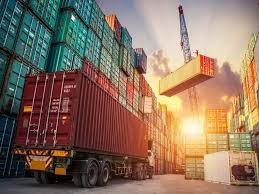Introduction
In the dynamic realm of logistics, the evolution of freight exchanges represents a pivotal advancement in enhancing efficiency, reducing costs, and streamlining operations within supply chains globally. Freight exchanges, often facilitated through digital platforms, have revolutionized how logistics companies, shippers, and carriers interact and transact. This essay explores the historical context, technological advancements, benefits, challenges, and future prospects of freight exchanges in transforming the logistics landscape.
Historical Context
The concept of freight exchanges can be traced back to the early forms of load boards, where carriers and shippers would physically post available loads and transportation needs in public spaces or specialized publications. These rudimentary exchanges relied heavily on personal networks and local connections. However, with the advent of the internet and digital technologies in the late 20th century, freight exchanges underwent a transformative evolution.
Technological Advancements
The rise of digital platforms in the 1990s marked a significant shift towards online freight exchanges. These platforms provided a centralized marketplace where shippers could post freight requirements, and carriers could bid on available loads in real-time. This shift democratized access to freight opportunities, enabling small carriers and independent truckers to compete with larger logistics firms on an equal footing.
Furthermore, advancements in data analytics, GPS tracking, and mobile technology have enhanced the operational efficiency of freight exchanges. Real-time tracking of shipments, predictive analytics for demand forecasting, and automated matching algorithms have optimized route planning and load consolidation, minimizing empty miles and reducing carbon footprints.
Benefits of Freight Exchanges
The benefits of freight exchanges are manifold. Firstly, they optimize resource utilization by matching freight loads with available capacity more efficiently, thereby reducing idle time and maximizing revenue potential for carriers. Secondly, they lower transaction costs and administrative overhead by automating processes such as invoicing, payment processing, and documentation. Thirdly, freight exchanges foster transparency and trust among stakeholders through rating systems and real-time feedback mechanisms, enhancing service quality and reliability.
From a broader perspective, the efficiency gains achieved through freight exchanges contribute to a more sustainable logistics ecosystem by reducing fuel consumption, emissions, and congestion on road networks. Moreover, the accessibility of real-time data and analytics empowers logistics managers to make informed decisions, improve supply chain resilience, and respond swiftly to disruptions or changes in market demand.
Challenges and Considerations
Despite their transformative potential, freight exchanges also face several challenges. One significant concern is cybersecurity, as digital platforms are susceptible to data breaches and cyber-attacks. Safeguarding sensitive information and ensuring compliance with data protection regulations are paramount concerns for operators of freight exchanges.
Additionally, the scalability and interoperability of digital platforms remain critical considerations. As the volume of transactions and participants grows, ensuring seamless integration with existing logistics systems and maintaining platform reliability becomes increasingly complex. Moreover, disparities in technological adoption and digital literacy among industry stakeholders may pose barriers to the widespread adoption of freight exchanges, particularly in developing regions.
Future Prospects
Looking ahead, the future of freight exchanges is poised for further innovation and expansion. Emerging technologies such as blockchain hold promise for enhancing transparency, security, and traceability within logistics transactions. Smart contracts powered by blockchain technology could automate contractual agreements and payment settlements, reducing administrative overhead and transactional friction.
Furthermore, advancements in artificial intelligence (AI) and machine learning are expected to refine predictive analytics capabilities within freight exchanges. AI-driven algorithms can analyze vast datasets to anticipate demand patterns, optimize routing decisions, and dynamically adjust pricing strategies in response to market fluctuations.
Moreover, the evolution towards interconnected logistics ecosystems, facilitated by Internet of Things (IoT) devices and cloud computing, will enable seamless data exchange and collaboration among supply chain partners. This interconnectedness fosters a more agile and responsive logistics infrastructure capable of adapting to evolving customer expectations and regulatory requirements.
Conclusion
In conclusion, the evolution of freight exchanges represents a paradigm shift in the logistics industry, driving operational efficiencies, reducing costs, and enhancing sustainability across global supply chains. From humble beginnings as load boards to sophisticated digital platforms leveraging AI, IoT, and blockchain, freight exchanges have democratized access to logistics opportunities while fostering transparency and trust among stakeholders. Despite challenges such as cybersecurity and technological disparities, the future of freight exchanges appears promising with ongoing innovations and technological advancements reshaping the logistics landscape. As the industry continues to embrace digital transformation, freight exchanges will play a pivotal role in shaping a more resilient, efficient, and sustainable logistics ecosystem for years to come.





Comments